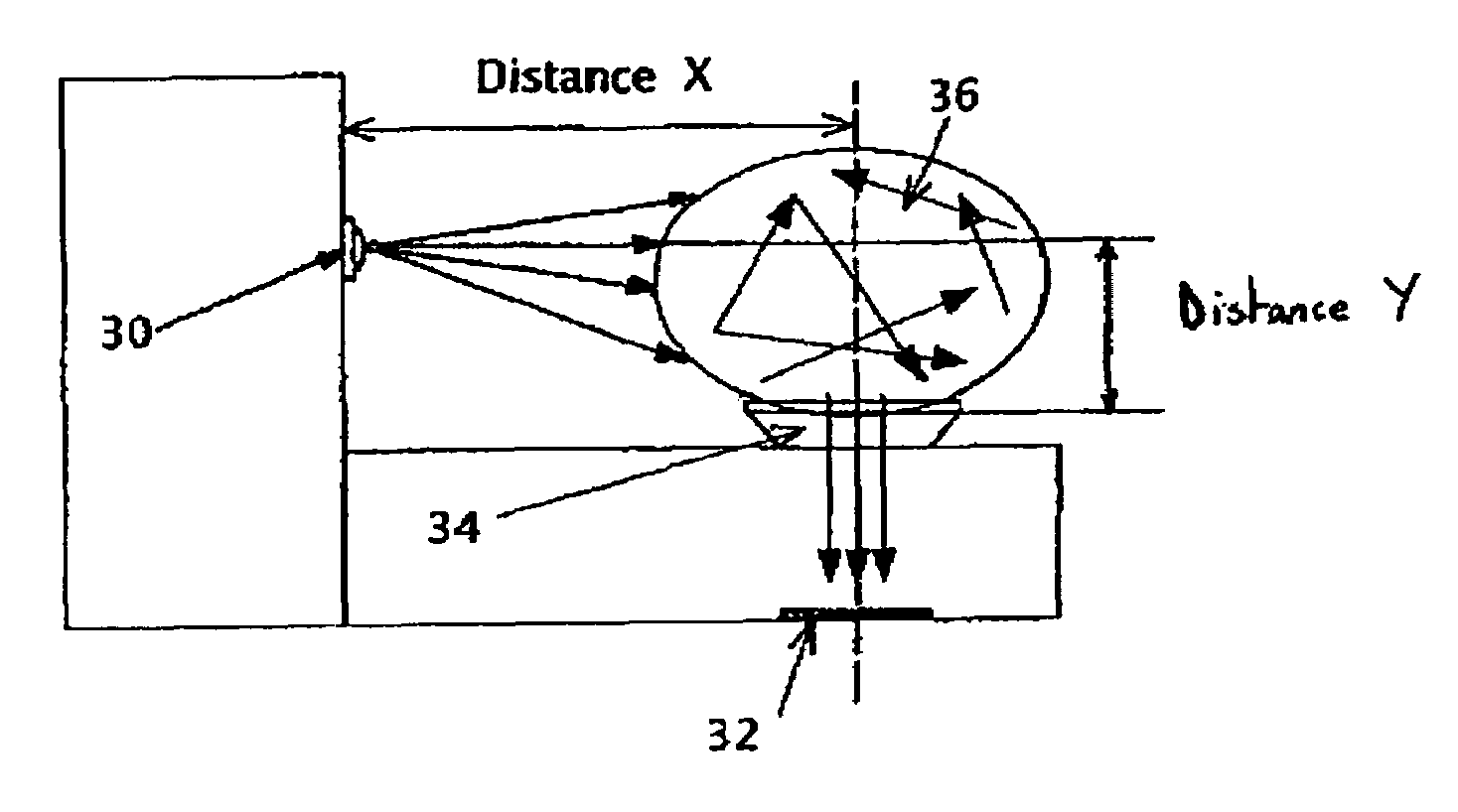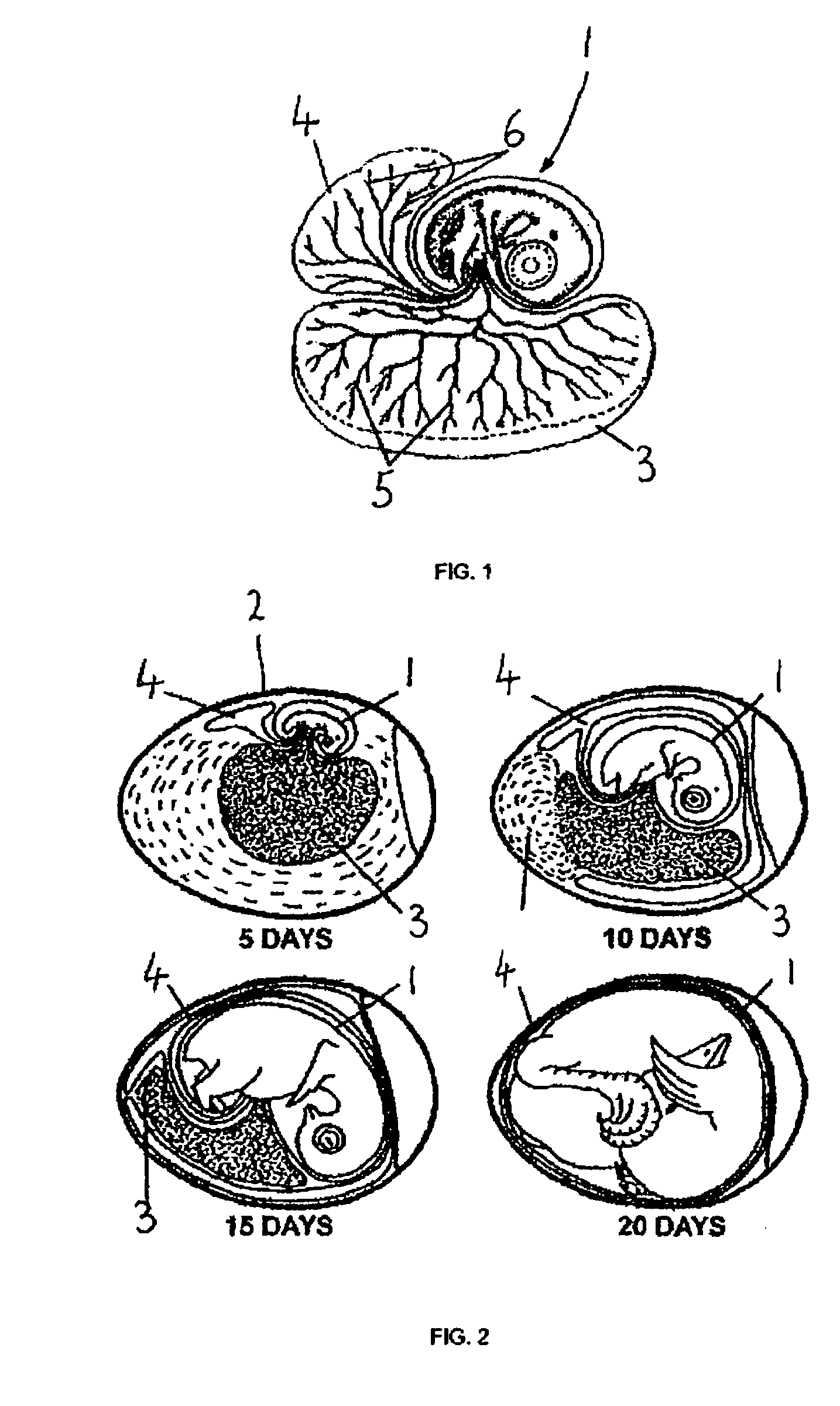Method and apparatus for determining the viability of eggs
a technology for egglaying and viability, applied in the field of methods and apparatus for determining the viability of eggs, can solve the problems of difficult detection of the action or movement of the chick on a light transmission basis, and achieve the effect of increasing the light intensity to unacceptable levels
- Summary
- Abstract
- Description
- Claims
- Application Information
AI Technical Summary
Benefits of technology
Problems solved by technology
Method used
Image
Examples
second embodiment
[0118]Referring to FIGS. 14 and 15 an apparatus generally identified by reference numeral 100 comprises a mount 101 having four arms 102, 103, 104 and 105, equi-circumferentially spaced around a central portion 106. Each arm 102, 103, 104 and 105 is of arcuate shape, constructed from plastics material and pivotally mounted on the central portion 106. Each arm 102, 103, 104 and 105 can pivot independently about a respective projection on the central portion 106. Each arm is also biased downwardly (in the sense of FIG. 14) by a respective spring (not shown) whose function will be described in greater detail below. At the end of each arm 102, 103, 104 and 105 is a surface mount infra-red light source 107, 108, 109 and 110. Each infra-red light source is part number SMT940 manufactured by Epitex, Inc., available from Pacer Components, Berkshire England, that can emit IR with peak intensity at 9.4×10−7 m (940 nm) and has a half-width of 50 nm. Mounted in the central portion 106 is a prox...
first embodiment
[0133]At step S6 the routine compares a maximum threshold value against the differences calculated above. The maximum value is determined on the basis of differentiating between signal change due to movement and signal change due to heartbeat. As seen in FIG. 18 signal change due to movement will be readily determined on an amplitude basis. If the differences correspond to a voltage difference of more than a few tenths of a volt, then it can be assumed that the signal is due to movement and not heart rate. If so, the routine proceeds to step S5 and generates an output indicating that the egg is viable. If however, all of the differences are found to be below the maximum threshold value then the time at which value number 6 (i.e. the start of the turning point) was taken is stored in memory at step S7. Due to the criteria applied in step S3 above, this will only occur when substantially all of the maximum or minimum turning point is within the window. If, for example, there are two p...
PUM
| Property | Measurement | Unit |
|---|---|---|
| angle | aaaaa | aaaaa |
| angle | aaaaa | aaaaa |
| angle | aaaaa | aaaaa |
Abstract
Description
Claims
Application Information
 Login to View More
Login to View More - R&D
- Intellectual Property
- Life Sciences
- Materials
- Tech Scout
- Unparalleled Data Quality
- Higher Quality Content
- 60% Fewer Hallucinations
Browse by: Latest US Patents, China's latest patents, Technical Efficacy Thesaurus, Application Domain, Technology Topic, Popular Technical Reports.
© 2025 PatSnap. All rights reserved.Legal|Privacy policy|Modern Slavery Act Transparency Statement|Sitemap|About US| Contact US: help@patsnap.com



